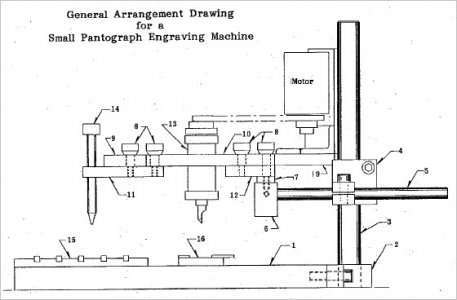Here are some links I've saved in the 'future projects' file. PDF plans are downloadable.
http://imageevent.com/tomgriffin/pantograph
http://bbs.homeshopmachinist.net/threads/46469-Get-a-grip-with-a-3D-pantograph!?highlight=pantograph
Coincidentally I am looking at some Ebay spindle motors in the 600watt 12,000 rpm class with included power supply / variable speed control & ER integrated collet. Shallow, light engraving you could probably get away with less power.
http://imageevent.com/tomgriffin/pantograph
http://bbs.homeshopmachinist.net/threads/46469-Get-a-grip-with-a-3D-pantograph!?highlight=pantograph
Coincidentally I am looking at some Ebay spindle motors in the 600watt 12,000 rpm class with included power supply / variable speed control & ER integrated collet. Shallow, light engraving you could probably get away with less power.

